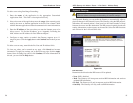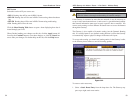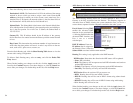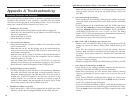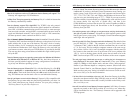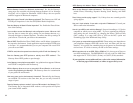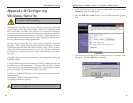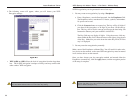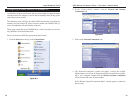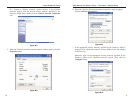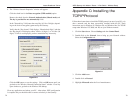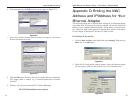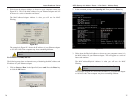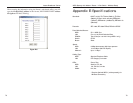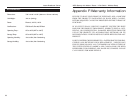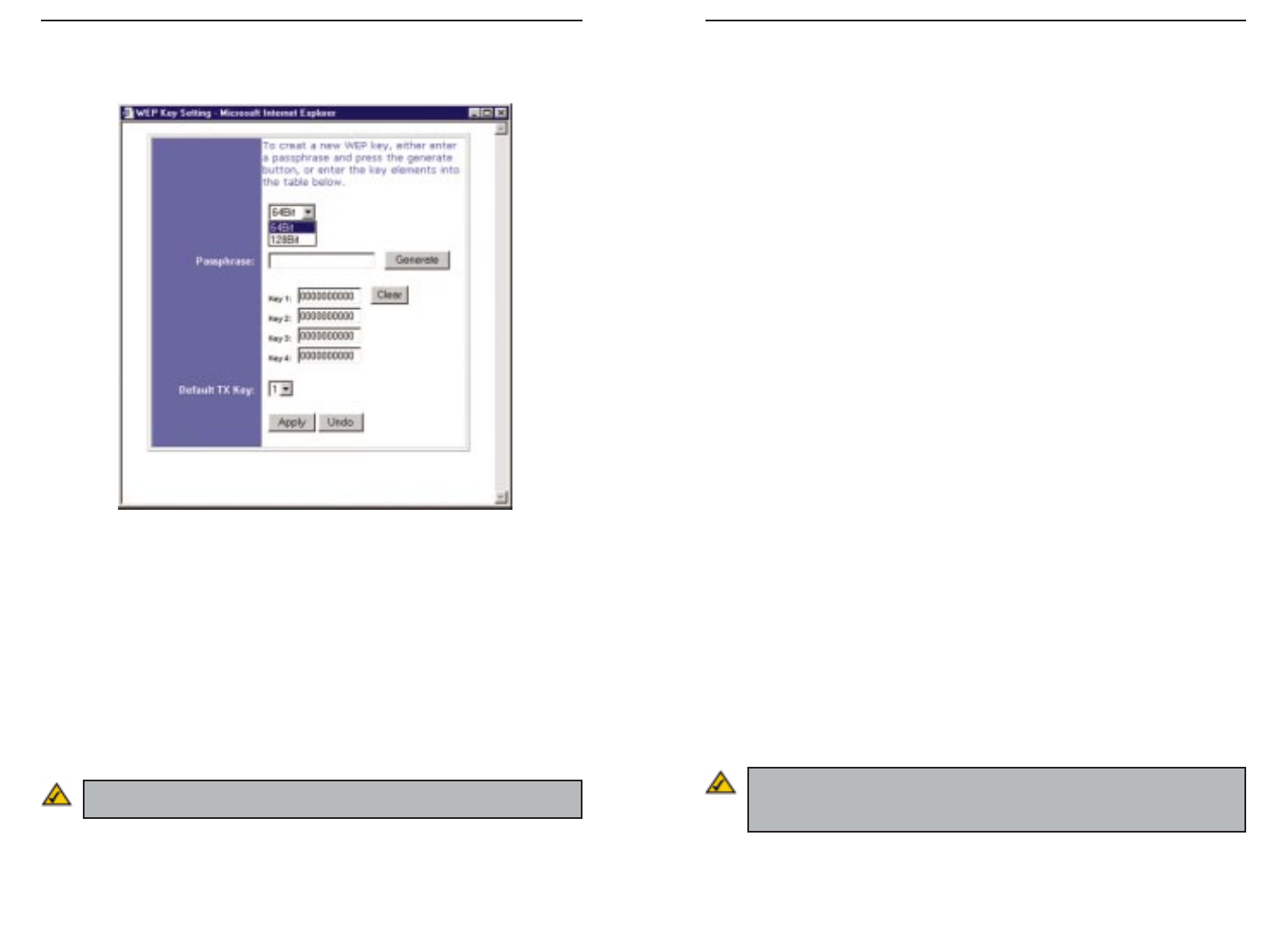
ADSL Gateway with Modem / Router / 4-Port Switch / Wireless-Ready
WEP Encryption key can be generated in one of two ways:
1. You may create an encryption key by using a Passphrase.
a. Enter a Passphrase, a user-defined password, into the Passphrase field.
The Passphrase can be a maximum of 31 letters, symbols, and numbers.
No spaces can be used.
b. Click the Generate button to create a key. The key will be 10 digits if
you chose 64-bit encryption, or 26 digits if you chose 128-bit encryp-
tion. This key will be used to encrypt and decrypt the data being sent
between the Gateway and your network’s wireless PCs.
The Key field may not display all digits. Using the mouse, click any-
where within the Key field. Move the cursor to the right to view the rest
of the Key. Make sure your write down the entire Key EXACTLY the
way it is displayed.
2. You may enter the encryption key manually.
Make a note of the Passphrase or Manual Key. You will need it for other wire-
less devices on the network, as the same WEP encryption key must be entered
in all wireless devices on the network.
Once you have chosen your key encryption method and entered either the
Passphrase or manual key, click the Apply button, and the encryption portion
of the setup is complete.
67
Instant Broadband
™
Series
4. The following screen will appear, where you will choose your WEP
Encryption settings.
• WEP (64Bit or 128B) Select the level of encryption from the drop-down
box. 128-bit WEP encryption is unique to Linksys and may conflict with
other vendors’WEP encryption.
66
Note: In Windows XP, a 128-bit Key generated by the Gateway will be called a
"104 bits (26 digits)" key, and a 64-bit Key generated by the Gateway will be
called a “40 bits (10 digits)” key.
Figure B-3
Note: In order to utilize WEP encryption, all points in your wireless network
must have WEP enabled and be set to the same Key Setting.



